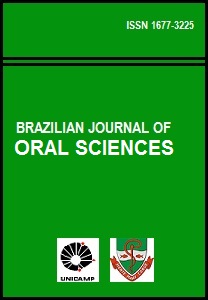Abstract
Aim: Periodontal pockets can be colonized not only by bacteria, but also by Candida albicans. However, its role in periodontitis is unknown. This study evaluated the inhibitory performance of chlorhexidine digluconate under normoxic and anoxic conditions against 16 strains of C. albicans from periodontal pockets and other 20 from the oral mucosa. Methods: Strains were grown in normoxia and anoxia to adapt themselves to the different atmospheric conditions. Microdilution-based assays were carried out to determine the minimum concentrations of chlorhexidine that may restrain the conditioned candidal strains, in normoxia (normoxic MIC) and anoxia (anoxic MIC). The Mann-Whitney U test was used to evaluate the antimicrobial effect of chlorhexidine on C. albicans under normoxic and anoxic conditions (α = 0.05). Results: The normoxic MIC of chlorhexidine varied broadly from 150 to 1200 µg/mL, whereas its anoxic MIC varied narrower from 2.34 to 37.5 µg/mL. Regarding the origins of strains, no statistically significant differences (p > 0.05) were found. Conclusions: These results indicate that anoxic environmental conditions, compatible with periodontal pockets, tend to enhance C. albicans susceptibility to chlorhexidine.The Brazilian Journal of Oral Sciences uses the Creative Commons license (CC), thus preserving the integrity of the articles in an open access environment.
Downloads
Download data is not yet available.

